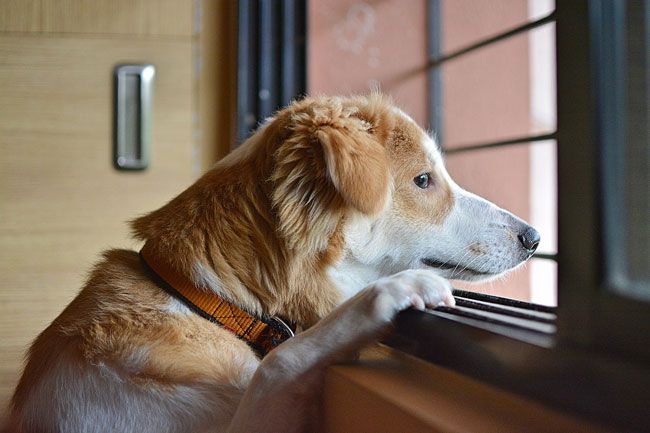These Behaviors May Indicate Separation Anxiety
Typically, symptomatic behaviors may begin either as the anxious dog’s human prepares to depart, or immediately after they leave. The behavior may continue for 30 to 60 minutes or longer, and in more extreme cases, for the entire length of the owner’s absence – even as much as eight to 10 hours. Destructive behavior is one of the most obvious and difficult signs of separation or isolation anxiety (SA or IA), but it is not the only one. Here are others that can be seen in some (but not all) dogs with SA or IA:
Velcro Dog – SA and IA dogs tend to be clingy even when owners are home – following their humans from room to room, and lying as close as possible when owners are seated. The dog may also frantically try to follow his human every time she walks out the door, even if she’s just going out to get the mail or newspaper.
Pacing – As you make preparations to leave, your dog recognizes the pending event, and begins to stress – often pacing, panting, and whining in anticipation of your departure.Vocalization – It is not uncommon for SA/IA dogs to be very vocal when their humans are gone.
House Soiling – Extreme stress can cause your dog to urinate and defecate indoors. He can’t help it.
Anorexia – Many dogs with SA/IA will not eat or drink when left alone. (This renders the often-given suggestion to give the dog a food-stuffed Kong or other toy relatively useless.)
Crate Intolerance – Dogs with SA/IA often will experience an even greater degree of panic if they are confined in a crate. Dogs who are destructive in the home due to immaturity and/or lack of house manners are often crated to protect the home, but this is generally not a viable option for SA/IA dogs. Panicked dogs have injured themselves and even died in the process of trying to escape from their crates.
For more details and advice on ways to prevent and cure canine separation anxiety, read Whole Dog Journal’s ebook Separation Anxiety.





